This are my ingredients:
- 300g All-Purpose Flour (Brand: Bake King)
- 1 tablespoon sugar
- 6g salt
- 3ml instant yeast (Brand: Bruggeman)
- 200ml water
Methods:
- Mix all the ingredients together.
- Knead for about 10-15mins to form a smooth dough.
- Put some vegetable oil in a bowl and left the dough to rise for 1 hr.
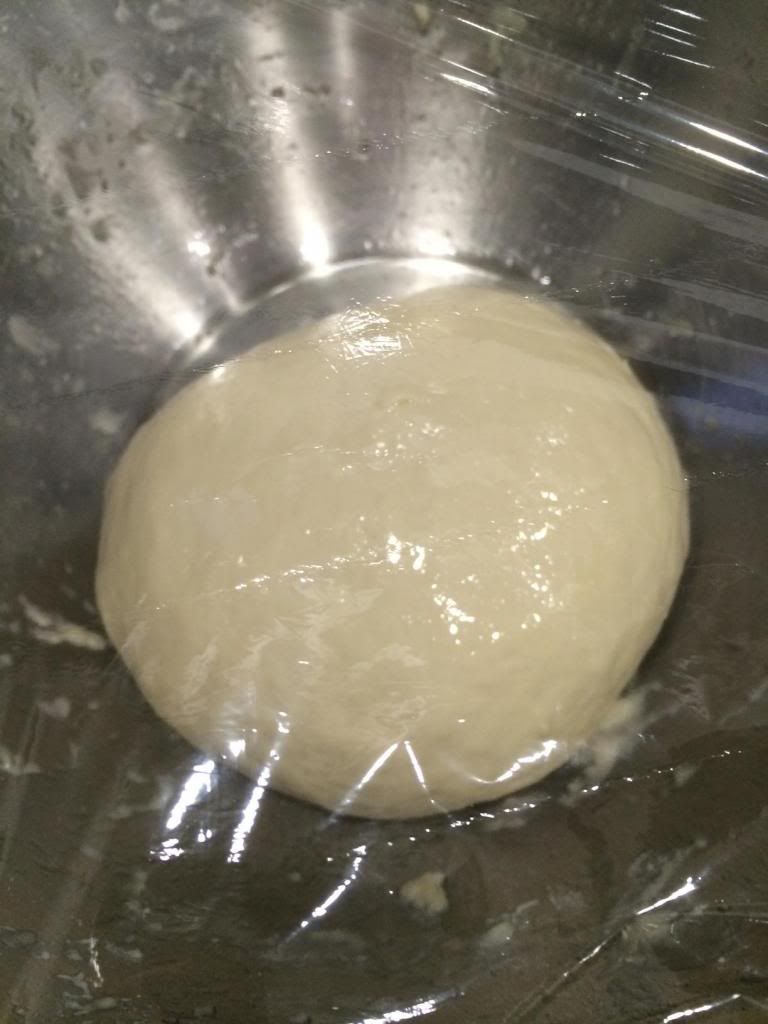
- After rising for an hour, fold the dough and left it in the baking tray to rise for about 30-45mins. Photo below shows before and after rising.
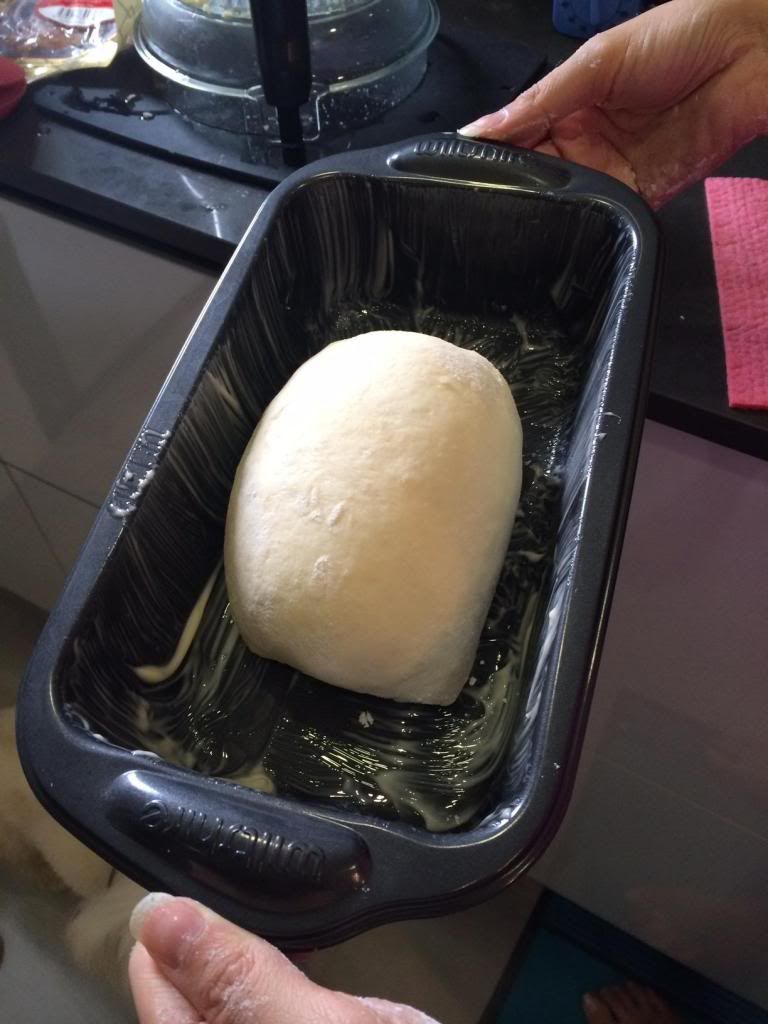
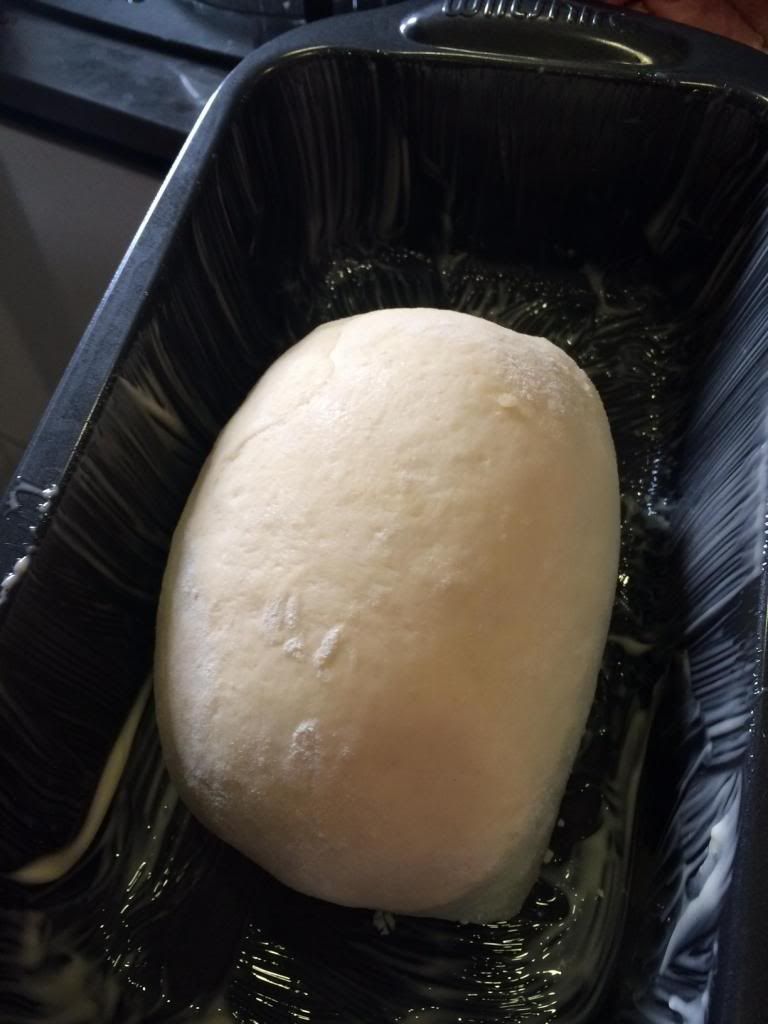
- Bake using "hot air" for 20mins. Photo shows the end product.
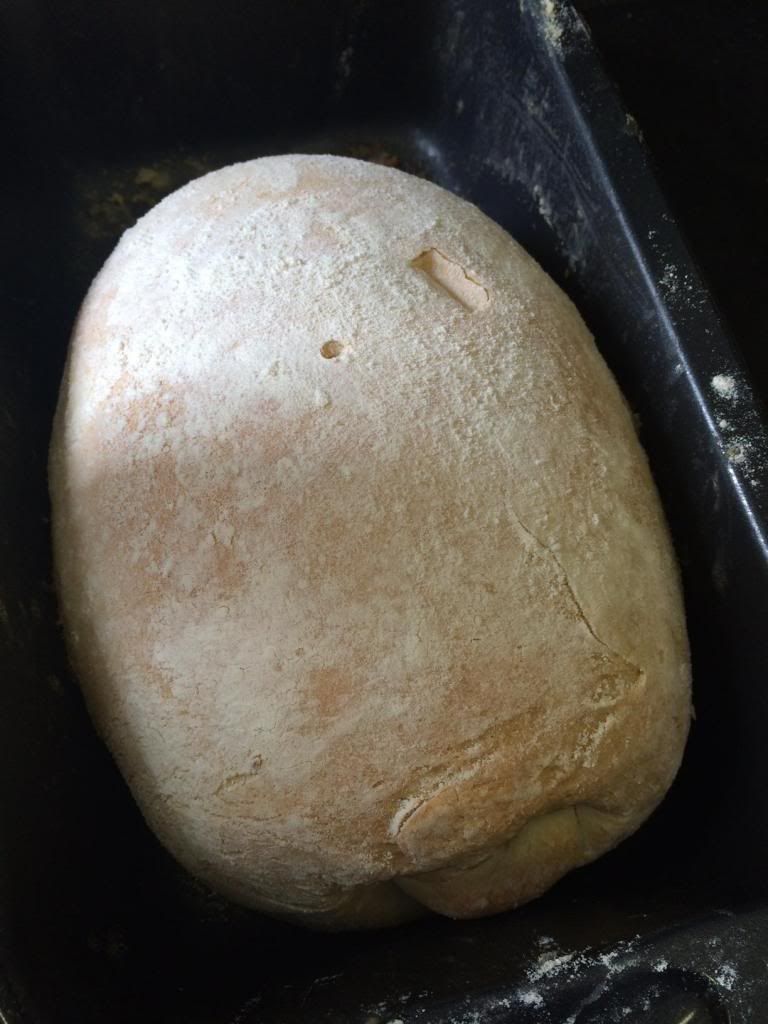
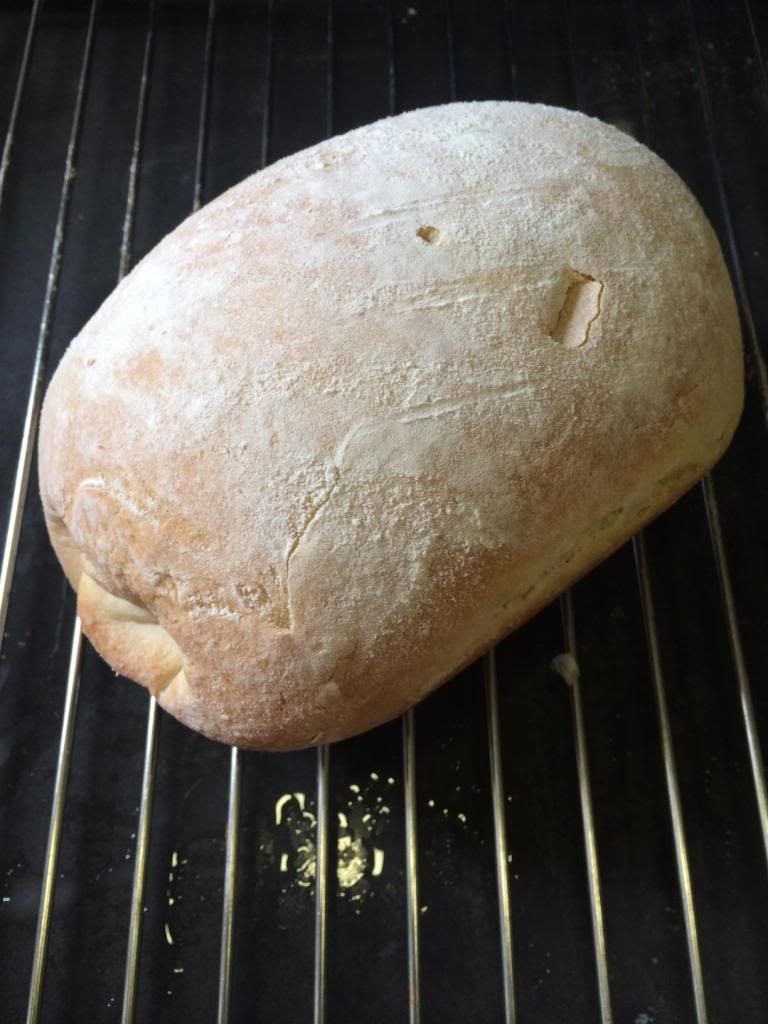

- This is a close view of the bread sideways. Bread tastes a bit sweet and salty.

My questions:
1) I think I used too little flour. Thus, the dough was not big enough to fill the baking tray. How and what else should I improve?
2) Why is the bread not white?
3) Why is the bread so dense? How do I make it more soft and fluffy?
Hi Daphne! I’m by no means an expert, but maybe I can help answer your questions.
1) I think I used too little flour. Thus, the dough was not big enough to fill the baking tray. How and what else should I improve?
That does strike me as too little flour. Most pan loaves I have seen have more, but I don't think it’s your biggest problem. It seems to me, from looking at the two pictures of your loaf in the pan before baking, that you didn’t have a lot of yeast activity. You should see much more rise between shaping and baking. I think the main reason that you didn’t get a substantial size increase is that you didn’t leave enough time. Normally, a bread like this would have a combined rising time somewhere between 2 and 4 hours. You have only 1.5 hours.
I would suggest that you let the dough rise more. Remember that the amount of rise is more important than the length of time. You want the dough to roughly double in size each time you let it rise. So, if you don’t see it double and get puffy in the length of time that you have allotted, then let it go longer until it does.
Other explanations for poor yeast activity is that you did not use enough (I’m not familiar with measuring yeast in milliliters, so maybe someone else can comment on whether or not the amount looks right), the dough was not kept at the proper temperature, or that your yeast is bad. Try to keep your dough in a warm spot during the whole process. Room temperature is usually not warm enough for optimal yeast activity; you want it to be around 80 degrees Fahrenheit.
You may also want to proof your yeast in a ¼ cup or so of warm water before proceeding with the rest of the dough. If it does not appear frothy in 5 minutes, your yeast may be bad.
2) Why is the bread not white?
I'm not sure I understand this question. That looks like a very white loaf of bread indeed. Would you like to see a whiter crumb?
3) Why is the bread so dense? How do I make it more soft and fluffy?
Again, the dense bread is the result of poor rising. More yeast activity will achieve the airiness you desire. I’m not certain from your recipe, but if you are hoping to get the sort of supple, soft bread that we normally call “sandwich bread,” you will probably never achieve it with just these ingredients. That texture is achieved by enriching the dough with some kind of fat. Most recipes include milk, butter, oil, or something like that.
Here is a popular example of classic sandwich bread: http://www.kingarthurflour.com/recipes/king-arthurs-classic-white-bread-recipe
This is the same recipe, but with pictures so that you can see the desired rise: http://www.kingarthurflour.com/blog/2010/01/28/sandwich-bread-fit-for-the-king/
Hope that helps some!
Thanks Lizzy. I'm using instant yeast so I need not proof it. How much yeast in this case should I use? I'm in Singapore so I assume the ambience temperature should be hot enough for the dough to rise. One of my oven does have this "Prove" function. Should I be trying that instead?
The bread is not white. It has a slight "yellowish" color. What happens if I use a "bleached" all-purpose flour?
The recipe with photos definitely is more useful. Thanks once again.
this bread but it is only enough to fill a small cocktail loaf pan. 2@ salt is a standard amount for a recipe but i find it is overkill too. You can cut it back to 1.5% easy enough and see how that tastes in any recipe.
I would use the KA recipe in the above link. It is a proven one that makes some of the best white sandwich bread around.
Happy Baking
A white crumb is an indication that the dough was over mixed, oxygenating the dough, thereby bleaching the carotenoids that give color and flavor. Good bread shouldn't be white.
The flour/water ratio is fine too at 66.67% hydration it's right in the standard range for many hearth breads.
1% instant yeast is kind of high. I would go half that with the aim to have the 1st fermentation last 3-4 hours, followed by shaping and a final rise of an hour or so. Longer fermentation equals better flavor and better keeping qualities. Maybe even less yeast if your room temp is quite warm or overnight fermentation in the refrigerator.
ericreed,
While I agree that good bread isn't white at my house, there are some people who prefer the taste and texture of bread that is "over mixed, oxygenating the dough, thereby bleaching the carotenoids that give color and flavor." There are older posts here on TFL showing how to best achieve that state at home, for those who are interested. Here is one of them, from TXFarmer:
http://www.thefreshloaf.com/node/23061/extremely-sourdough-soft-sandwich-bread-most-shreddble-soft-velvety-ever
This post is about sourdough bread, but the mixing/kneading method could be applied to probably any bread dough recipe, including the one used by Daphne.
Well, I think we're all working from different assumptions based on the limited information we have here. My assumption is that someone motivated enough to bake bread is more likely to be interested in making what would be widely regarded as good bread vs. a wonderbread clone. (There's no Chad Robertson or Ken Forkish of short rise over-mixed bread out there getting accolades.) Or if they want soft white sandwich bread, that they would prefer a quality pan de mie with overnight cold fermentation or other flavor boosting technique. Given that the only additional flavor components in the recipe given are from a bit of sugar, I'm further assuming she would want to evoke as much flavor as possible from the wheat, which means short mixing and long rises.
I know for myself, the very first time I made bread was as a teenager. I baked for a couple months and it was bad bread, very much like what she did up there. I ended up not baking bread again for nearly 20 years because I thought I was incapable of making tasty breads.
Of course, if someone does want to just knock out a loaf now and then quickly and that's what they like, that's fine. We all have our guilty pleasure foods that we know aren't really good but love anyway. But I won't make that assumption unless someone explicitly says that is what they want.
Here is a great three part video on baking a basic white bread from King Arthur Flour
https://www.youtube.com/watch?v=Ln1BkIc0xsc
https://www.youtube.com/watch?v=5ZqJyalYqKU
https://www.youtube.com/watch?v=yGb-hwg2OaU
3ml is a little more than half a teaspoon (2.5ml) or (and I measured out) almost 2g of yeast.
For 300g flour 1% is 3g. So the yeast amount is under 1%. This would mean that the rise times are too short. A longer bulk rise would help. Let it bulk rise until it has doubled in volume.
You might want a recipe that is closer to 400g flour for the pan.
Now, I'm not sure if I should put more or less yeast than my current 3ml.
If I let rise overnight in the fridge, it would be better?
Thanks BGM. I've already watched these videos before I made this bread. If not, maybe it would be worse. Haaa
Yeah, I didn't convert the volume to weight.
I would generally do around 0.4%-0.5% yeast based on flour weight (0.4-0.5 grams instant yeast per 100 g flour). So for 300 grams flour, that 1.2-1.5 grams yeast. Ideally, that should double in 3-4 hours, with another hour or so after shaping for the final proof. For a bread with no enrichments, no butter, sugar, milk, etc, you need at least that long to get good flavor from the wheat.
Very good. It has a pleasing shape and it is baked through.
A few minor tweaks and a little more rising and the loaf will come along naturally as confidence builds with each bake. You might even want to keep the same recipe (as it is not too large) and play with it experimenting with the few ingredients just to find out how simple changes change the outcome of the loaf.
Keeping to one basic loaf recipe makes it easy to compare to the next bake. This time you might want to just let it rise more and see how it fills the pan or gets lighter as more light can reflect in the loaf's crumb. You can also experiment with two bulk rises if you like.
You can vary anything in the dough.
Yeast: you can increase it or reduce it. The more you use the faster it ferments and rises, the less the slower it ferments and rises. You can use a Tablespoon in one batch and anything down to a pinch in another. See which ones you like and note the changes. I once threw two tablespoons of yeast into a loaf and my lab rats loved it!
Water: you can use 50% hydration (150g water to 300g flour) or go as high as 210g for 70% hydration and see if you can fold the goop over and over to build gluten power. Or just pour it into the pan and see what bakes out. It is all learning. You get more of an idea of where the ranges are for dry and wet doughs. You can switch water out for potato water or milk or any combination that strikes your fancy and see how it compares to previous loaves. You might even want to try weighing an egg into your liquids (65g egg + 135 water)
Salt: reduce or play with the amount. Up or down
Sugar: not required but what happens if it is reduced, left out or changed to another type of sugar? What does a teaspoon of brown sugar do? or honey?
Fats: butter or oil, how does this change the feel of the dough and the texture of the crumb?
Flour: Try unbleached and bleached and note the differences. Try switching out small amounts of other flours to see what their impact does.
There are all kinds of experiments you can do. But change only one thing at a time if you want a clearer idea of what has changed in the dough. Take notes.
If you want to jump start to more dough, you can do that or make two or even three separate dough batches (you do have a large loaf pan) and drop them into the same pan and compare them for taste after baking.
Wow...that's a lot of permutations that I can work with. Thanks Mini Oven!